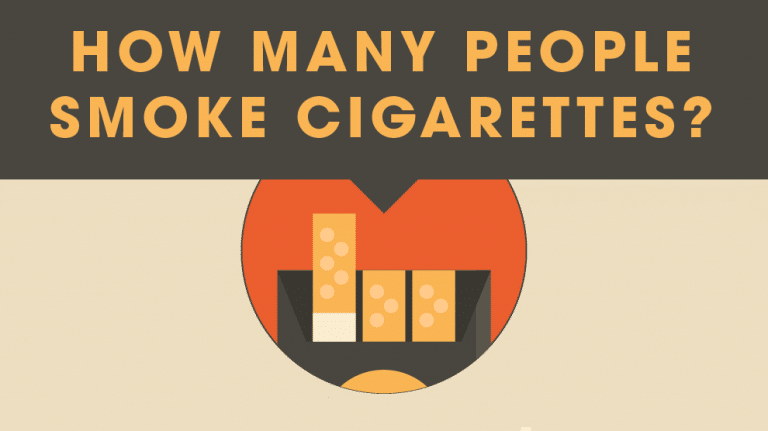35 Curious Vaping Statistics & Facts to Spark Your Interest

New vaping statistics are very intriguing, to say the least. On the one hand, the revenues are getting higher. On the other, the number of underage vapers is reducing, all thanks to the global coronavirus pandemic.
Ever since the first e-cigarette was introduced, vape products have been hailed as a more discreet, more affordable, and safer alternative to smoking. Even the most vocal opponents can’t deny vape facts about vaping cannabis offers the fastest-acting relief for medical users. However, vaping is not without risks.
Did you know that vaping doesn’t really help people quit smoking? Or that cannabis vaping is on the rise among teens and that e-cigarette use contributes to young people becoming addicted to nicotine?
Read through these stats and facts on vapes to find out more about the effects and potential dangers of e-cigarettes and cannabis vaping products.
Top 10 Essential Vaping Statistics for 2022
- 11% of Americans smoke electronic cigarettes.
- The US vaping market was worth $6.2 billion in 2020.
- Around 11% of e-cigarette users have asthma.
- 59% of Americans are aware of the dangers of vaping.
- 19.6% of high schoolers and 4.7% of middle schoolers smoked e-cigarettes in 2020.
- Since the beginning of the pandemic, 32.4% of young adults quit using e-cigarettes.
- Teens that use cigarettes and e-cigarettes are 6.8 times more likely to test positive for coronavirus.
- Around 20 million people in the US vape CBD.
- 13% of Americans were interested in using CBD vaping products in 2020.
- 71.5% of US adults believe that using electronic cigarettes will help them quit smoking.
Vaping Statistics Around the World
How many people use electronic cigarettes?
1. 11% of Americans enjoy electronic cigarettes.
(Statista)
China is the leader when it comes to e-cigarette usage, with 17% of reported smokers. Next in line is the UK, with 14% of e-cigarette smokers, and France with 13% of reported smokers. The US usage rates have dropped from 13% to 11%. EVALI is probably to blame for it.
2. E-cigarette usage statistics for the UK show that 6.3% of the population are current vapers.
(ASH)
Out of 3.2 million vapers in the UK, under 2 million (61.7%) comprise of people who used to smoke cigarettes, followed by 1.2 million (38.3%) current cigarette smokers and about 100,000 people who have never smoked cigarettes. That said, the statistics show a decline in the number of e-cigarette smokers in 2020 by 0.8% (compared to 2019).
3. India is one of 41 countries that banned the selling of e-cigarettes.
(The Lancet)
The Indian Government decided to ban the selling of electronic cigarettes in 2019 in order to promote public health. India is not the only country that banned the sale of e-cigarettes. Vaping statistics data shows that 41 countries have banned nicotine e-cigarette selling (like Australia, Brazil, Japan, Turkey, and Thailand).
4. Almost two-thirds of Americans want stricter regulations on vaping products.
(Gallup)
Opinions regarding regulation on e-cigarettes are divided among 18- to 29-year-olds with 49% asking for more stringent laws and 42% saying that rules are fine as they are. Only 5% of US adults stated that laws should be less strict.
Vape Industry Statistics
How big is the global vaping market?
5. The global vape market was valued at $12.42 billion in 2019.
(Grand View Research)
Projections for 2020 to 2027 expect revenue from the e-cigarette and vaping products market to grow at an incredible rate of 23.8%.
6. The US vaping market is the largest in the world. It was worth $6.2 billion in 2020.
(Grand View Research) (Statista)
The UK is in second place with a market worth $3,1 billion, followed by Canada, France, and Germany. Trends and vaping statistics indicate that growth is expected in Europe as well; however, stricter regulation and lack of awareness over existing technology might hinder progress.
7. By 2025, the worldwide revenue of vape products will be bigger than $60 billion.
(PR Newswire) (Technavio)
The modular e-cigarette market is the largest segment of the overall e-cigarette market, mainly driven by the fact that these devices are easily customizable, allowing the quick change of flavors and the amount of vapor generated.
In terms of brands, JUUL led the pack with a 75% share of the US e-cigarette market, vaping statistics from 2019 show, while in 2020, it accounted for 63% of the sales.
8. E-cigarette brands employed various marketing techniques to boost revenues such as offering free hand sanitizers.
(BMJ)
For example, brands like BLVK and Podsalt offered free gifts to their customers (like masks, hand sanitizers, and toilet paper), while others used the situation to create coronavirus-themed discounts, using promotional codes like “StaySafe” and “StayHome.” Some even used their capacities to focus on the major production of hand sanitizers.
What Is Vaping Doing to Us?
What does vaping do to your organism?
9. The aerosol produced by electronic cigarettes contains harmful materials.
(Truth Initiative)
Even though that’s the official name we use, vaping devices actually produce an aerosol, not a vapor, containing over 60 chemical compounds that can lead to adverse effects on the heart and blood vessels including cancer.
10. Around 11% of e-cigarette users have asthma.
(Johns Hopkins Medicine)
One study found that people who consumed vaping products on a daily basis were 73% more likely to suffer from asthma, vaping health statistics reveal. In contrast, those who vaped occasionally had 31% higher chances of developing asthma.
A separate study discovered that 11% (of over 700,000 participants) of vapers suffered from either emphysema, chronic bronchitis, or COPD (chronic obstructive pulmonary disease).
At the same time, the number of COPD patients was twice as low among those who never used e-cigarettes.
11. A total of 68 people have died from the EVALI outbreak in 2019.
(Axios)
According to vaping statistics, as of 2020, there were 2,807 confirmed cases of severe respiratory illnesses associated with vaping of nicotine and cannabis products.
Even though there was a suspected link to THC vapes, vitamin E acetate was identified as the primary cause of the lung-disease epidemic that swept across the nation in 2019.
12. The youngest EVALI victim was 15 years old.
(TIME) (Axios)
Victims from the lung-disease outbreak ranged from the ages of 15 to 75, but the median age of patients who died was 49.5, vaping death statistics reveal.
13. The liquid in e-cigs is also dangerous.
(CDC) (AAPCC)
As of January 31, 2021, there were 407 cases of exposure to e-cigarette devices and liquid nicotine. Children and adults have been poisoned by swallowing, breathing, or absorbing the liquid through the skin and eyes.
14. 59% of Americans are aware of the dangers of vaping and the illnesses it can cause.
(Statista)
In contrast, 6% of Americans reported knowing nothing about the dangers of vaping, with 14% reporting having little information, and 21% having some information on e-cigarette related illnesses.
15. A total of 2,035 e-cigarette explosions and burn injuries were registered by ERs in the US from 2015 to 2017, vape explosion statistics show.
(Vox) (Sawaya Law)
Although the FDA reports that these incidents are rare, they still happen. The USFA has reported 195 e-cigarette explosions in the US from 2006 to 2016.
In 19.5% of these cases, victims suffered serious injuries, such as loss of body parts and third-degree burns, and there was even a fatality in 2018 when a Florida man died from severe injuries sustained while using an e-cigarette.
To avoid potential battery explosions, always remember to use these safety tips.
Teen Vaping Statistics
How many teenagers use e-cigarettes?
16. 19.6% of high schoolers and 4.7% of middle schoolers smoked e-cigarettes in 2020.
(CDC)
That’s about 3.02 million high school students and 550,000 middle school students. Pre-filled pods and cartridges were the most desired merchandise. Moreover, both groups adored fruit flavors best, followed by mint and menthol (among high schoolers), i.e., candy (among middle schoolers).
17. Since the beginning of the global pandemic, 36.5% of underage young adults quit using e-cigarettes.
(JAMA)
Teenage vaping statistics from 2020 report that, since the beginning of the coronavirus crisis, 67.7% decided to reduce vaping or quit altogether. The main reason behind these changes was related to the inability to visit vape shops, in addition to the unavailability of products, and parents’ control had a say in that too.
18. Youth that uses cigarettes and e-cigarettes is 6.8 times more likely to test positive for coronavirus.
(JAH)
Based on the results of a recent vaping and coronavirus study, conducted on US youth (13 to 24 years old), those who were using e-cigarettes and cigarettes one month before the survey were 4.7 times more likely to show coronavirus symptoms compared to the non-smokers.
Sharing vapes or using any other CBD products for multiple users is not recommendable nowadays.
19. The number of college students vaping nicotine and cannabis dramatically increased.
(Michigan News)
College students vaping statistics show that the number of marijuana and nicotine vapers (19-22 years old) increased dramatically from 2017 to 2019. For example, the percentage of marijuana vapers went up by 14% among college students in 2019, whereas the percentage of nicotine vapers went up by 22%.
20. Almost all young vapers (97%) use flavored products, vape statistics reveal.
(Campaign for Tobacco-Free Kids) (USA Today)
As many as 70% of teens who vape said they use e-cigarettes because they are available in their preferred flavors.
Flavors further lure teens into vaping so the FDA issued a ban on unauthorized flavored cartridge-based electronic cigarettes marketed to kids and teens, as of January 2020. This is done in an effort to address concerns regarding vape health issues.
The ban, however, doesn’t refer to all 15,000 flavors. Only fruit and mint flavors were covered by the ban, while menthol and tobacco-flavored products were excluded.
21. Facts about vape pens show JUUL is the preferred brand of e-cigarettes among high school teens.
(CBS)
60% of the 20,000 young people in a government survey pointed to JUUL as their favorite brand. Another term for vaping is JUULing.
22. Around two-thirds of teen JUUL users are not always aware that this brand of e-cigs contains nicotine.
(CDC)
These are some alarming vaping statistics from the CDC, considering that a single JUUL pod has as much nicotine as a 20-cigarette pack.
Cannabis Vaping Stats & Facts
What should you know about vaping cannabis?
23. 21% of 12th graders vaped marijuana in 2019.
(Reuters)
19% of 10th graders and 7% of 8th graders reported vaping marijuana in 2019; however, the most significant increase (7.7%) was noted among high school seniors — 21% of whom stated they had vaped THC in the past year, which are some fairly scary vaping facts. THC is not safe to be used at such a young age.
24. The greatest vaping dangers come from using THC vapes acquired from informal sources.
(CDC)
Only half of the marijuana vapers hospitalized for EVALI provided information on the products they used.
The majority of them (78%) stated that they had acquired vapes from online shops, friends, or dealers, whereas only 16% bought THC vapes from regulated dispensaries.
25. Vaping marijuana has a much stronger effect than smoking it.
(JAMA) (Healthline)
Serious health facts about vaping warn us that inhaling 25 mg of THC has more pronounced adverse effects on cognitive and motor abilities than smoking the same amount of THC. The recent EVALI cases and their connection to THC vapes have sparked further discussion of the potential side-effects of vaping weed.
Cannabis edibles such as chewy CBD gummies, on the other hand, seem to have little to no side-effects, prompting experts to recommend them as the best way to consume marijuana, in moderation of course.
26. Around 20 million people in the US vape CBD, vaping facts show.
(Consumer Reports)
A 2019 survey found that almost a third of all US citizens who had tried CBD in the last year had used vaping as a method of consumption as it is relatively easy to master.
Even after the EVALI crisis, less than a quarter of CBD users stopped consuming the substance in vaporized form.
27. 13% of Americans are interested in using CBD vaping products.
(Statista)
Facts about vaping imply that the most popular CBD products among adult Americans in 2020 were CBD lotions and balms (29%) and CBD gummies (28%), whereas only 8% were interested in trying CBD patches.
28. CBD vapes allow the human body to absorb between 34% and 46% of cannabinoids.
(Green Entrepreneur)
People absorb only 10% of CBD from edibles, so according to the stats, vaporizing cannabidiol oil or liquid is the most efficient way to get the substance into your bloodstream.
29. Vaping health facts show that vaping CBD is the fastest way to feel the effects.
(Royal CBD)
When users vape or smoke CBD, they feel the effects almost instantly, whereas edibles take 30 to 90 minutes to kick in, and tinctures start to take effect after 15–20 minutes.
30. Only mild side-effects are reported by using CBD vape juice in vaping products.
(Healthline) (Consumer Reports)
Some users report nausea, tiredness, and slight irritability (although none of these were deemed serious).
However, bad facts about vaping CBD point to at least 26 hospitalizations the CDC traced back to vaping cannabidiol oil.
31. Some CBD extracts in vape pens and cartridges contain more than cannabidiol.
(Quartz)
While CBD isn’t dangerous by itself, many CBD extracts contain MCT (medium-chain-triglyceride) — oils and fats derived from coconut oil and other natural sources.
There is little evidence showing whether vaping these products along with CBD is safe or effective in treating medical conditions. Moreover, there are different additives, usually for flavor enhancement.
32. Vape health facts that are not to be ignored state labels on certain CBD cartridges can be misleading.
(Karger)
A 2017 research discovered that 42.85% of CBD products analysts tested had more cannabidiol than the label indicated, whereas 26.19% had lower CBD content.
In fact, only 30.95% of products were correctly labeled, making it more important than ever to buy your CBD oil from reliable sources.
33. Results of statistics on vaping and CBD point out that more research is needed to discover the long-term effects of CBD vaping.
(MarijuanaBreak)
More extensive studies are required on CBD and vaping, particularly when it comes to patients who use vape pens and other products for the treatment of chronic conditions, such as pain, anxiety, and various sleeping problems.
Vaping vs Smoking Facts & Stats
What are the main differences between vaping and smoking, and which one is more harmful?
34. Vaping is less expensive than smoking.
(Vaping360) (VerywellMind)
Vapers usually spend about $50–$120 per month on vape pens, replacement coils, and juice. The prices of disposable vapes range between $5–$10. Pod systems will cost you $10–$30, whereas vape pens go from $15–$35. Eventually, coils and juice will set you back $30-60 per month. In comparison, the average cost of cigarettes is $6.28, meaning that smoking will cost you roughly $188 per month.
35. Introducing vaping facts and myths: 71.5% of US adults believe that using electronic cigarettes will help them quit smoking.
(Truth Initiative) (CDC)
This is one of the most popular smoking and vaping myths, but sadly it isn’t true.
According to one study, vapers had 70% fewer chances of quitting smoking than non-users. On top of that, Surgeon General’s 2020 Report determined that there is inadequate evidence to support claims that vaping may encourage smoking cessation.
To Sum Up
Although most vapes are less harmful than the chemicals in cigarettes and more effective, particularly when it comes to experiencing the medical benefits of CBD, they still come with multiple health risks. According to statistics on vaping, these shouldn’t be taken lightly. Lung injury, heart disease, and cancer are just some of the potential dangers of vaping.
But the issue causing the greatest concern is how vaping, especially vaping marijuana, affects young people. Kids and teens are the biggest consumers of vaping products and the most vulnerable to nicotine and other substance addiction.
More than ever before, young people need to be aware of the above vaping statistics, and it’s up to parents, governments, and society to point these risks out to them.
FAQs
What does vaping do to your lungs?
The US saw the damage of vaping first-hand in the recent EVALI outbreak. Other potential effects of vaping on the lungs include increased odds of COPD and asthma, and even lung cancer, primarily due to the presence of acrolein in e-cigarettes.
Even though experts on lung disease believe vaping cannabis oil might have the same effects as e-cigarettes, they agree that more information is needed regarding the long-term effects of cannabis vaping on a person’s respiratory system.
Researchers found that 92% of the vapes they studied had a minimum of three different compounds known to cause popcorn lung — a lung disease that causes scarring and narrowing of airways.
Therefore, be very careful when choosing vape products!
What does vaping do to your body?
In addition to causing lung irritation and disease, vaping is also connected to increased rates of heart attack, cardiovascular disease, and stroke. Using vaping products also increases the risk of periodontal diseases and tooth decay.
Vaping cannabis is beneficial in many ways, but regarding side effects, it might have short-term effects on the users’ memory or coordination, while vaping CBD could cause mild nausea or irritability.
Cannabis vaping products might contain other chemicals, such as flavoring agents, which could result in similar side-effects to vaping nicotine-free cigarettes, although more research is needed to determine the long-term effects of vaping weed.
Does vaping cause cancer? Other studies link vaping to cell dysfunction and DNA damage that can later cause cancer.
What does vaping do to your brain?
Vaping nicotine can be very harmful, especially for adolescents, since it changes the brain cell activity in the parts that are accountable for learning, memory, and attention, causing mental fog. What’s more, nicotine can worsen the effects of irritability, anxiety, and impulsivity. A large-case study reports that children who start vaping in their early ages (8–13) are more likely to have problems concentrating and remembering.
Is vaping worse than cigarettes according to 2019 reports?
Opinions largely differ on this one. Health experts from Johns Hopkins Medicine suggest vaping is less harmful than cigarettes. Yet, in 2019, the FDA received 127 reports of seizures and other neurological symptoms that they believe are linked to the use of vaping products.
Vaping nicotine exposes you to fewer harmful chemicals than smoking, but it is harder to control the product quality and responsible usage.
How many teens are vaping?
3.02 million high school students and 550,000 middle school students smoke e-cigarettes, judging by the latest numbers from 2020. To be more precise, that’s about 1 in 5 high school students, i.e., 1 in 20 middle school students.
The most popular vaping devices among high school students were pods or cartridges (48.5%), disposables (26.5%), and tanks (14.8%).
How many deaths have been caused by vaping in 2019?
In 2019, there were 34 vaping-related deaths that were associated with lung injury (EVALI). 59% of the deceased were male, with a median age of 45.
The number was even higher in 2020 when 2,807 people were hospitalized in the US, and 68 people lost their lives. That said, research shows that vitamin E acetate, which is an additive in some e-cigarettes and vaping products that contain THC, can be associated with the EVALI outbreak.
What age does vaping affect the most?
Anyone younger than 25-30 years old is at risk of developing nicotine addiction due to vaping. Given that the brain is still developing till this age, the usage of any addictive substance can be very risky. Nicotine has the potential to damage the brain and the parts responsible for learning, attention, and mood.
On that note, adolescents who start smoking by vaping are also at a higher risk of switching to traditional cigarettes.
Which is worse, smoking or vaping?
Compared to vaping, smoking seems to be more harmful. However, this doesn’t mean that vaping is 100% safe either. Both traditional cigarettes and e-cigarettes contain nicotine and various chemicals that can be detrimental to our bodies.
On the one hand, while we know that long-term smoking can lead to various health problems (e.g., cancer, blockages in veins and arteries, and reduced sperm count), we still don’t know the exact long-term effects of vaping.
On the other hand, vaping statistics suggest that vaping can cause lung damage, in addition to weakening the immune system and promoting cancer development.






Your site is misleading. Vaping is MUCH safer than smoking, and literally saved my life.
Hello Troy! Would you mind expanding on that?